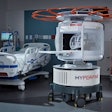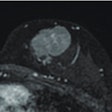Whether they are imaging specialists or not, clinicians looking at 1H MR spectroscopy (MRS) data would have no trouble spotting the biochemical changes in the brain. But truly understanding the MRS charts is another matter.
For that reason, a multispecialty group from Europe joined forces to form the International Network for Pattern Recognition (INTERPRET), a user-friendly computer program for spectral classifications, according to Dr. B. Anthony Bell in a presentation at the 2004 Congress of Neurological Surgeons (CNS) meeting in San Francisco in October.
"Nowadays, we can do MRS routinely in any scanner. You can see characteristic (biochemical) changes with the naked eye, but it's a bit difficult for a clinician to interpret these spectra. The idea was to automate pattern recognition in proton MRS," said Bell, who is from St. George's Hospital Medical School in London.
The INTERPRET study recruited 621 patients, with verified intracranical tumors, between January 2000 and December 2002. They had undergone preoperative MRS at neurosurgical units at St. George's and affiliated hospitals, the Autonomous University of Barcelona and several other Barcelona hospitals, the University Hospital and University of Nijmegen in the Netherlands, the University Hospital of Grenoble in France, and the University of Sussex in the U.K.
All clinical and radiologic data, as well as histological slides, were reviewed by a panel of neurologists, neurosurgeons, neuroradiologists, and neuropathologists. Pattern-recognition algorithms were then developed to create an automated analysis system for proton MR spectra.
The five chemicals that can be seen in the normal brain are:
- N-acetyl aspartate (NAA)
- Creatine (Cr)
- Choline (Cho)
- Glutamine and glutamate (Glx)
- Myoinositol (mI)
In the abnormal brain, lactates and lipids may be present, Bell said.
Using the INTERPRET pattern-recognition software, average spectroscopic patterns were developed for meningiomas, astrocytomas (grade 2-3), glioblastomas, and metastases. Analysis of both single-voxel and multivoxel prototypes was performed.
These prototype user interface systems "allow spectra from new cases to be classified with an accuracy that exceeds 90%, and is similar to that achieved by a stereotaxic biopsy and neuropathological examination of the tissue," Bell wrote in his CNS abstract.
The INTERPRET decision-support system is meant to be installed on a computer next to the lightboxes in a reporting room and used alongside MRI. Users can then pepper the system with questions in an effort to pare down the diagnosis. For example, "Is this more characteristic of a high-grade or low-grade astrocytoma?"
The classification results are displayed visually in a 2D plot, as well as numerically. For multivoxel data, any voxel can be selected, and the corresponding spectra will display.
The INTERPRET team also offers data acquisition protocols, clinical data protocols, and MRS quality control protocols, which can be downloaded from a secondary Web site.
As neurological specialists grow more comfortable with MRS data and its interpretation, the wider use of MRS should reduce the need for brain biopsies, according to the INTERPRET Web site. MRS data will also aid in tumor treatment planning and therapy.
By Shalmali Pal
AuntMinnie.com staff writer
November 25, 2004
Related Reading
Sophisticated MR techniques hone in on micro levels of MS, August 11, 2004
GABA levels may affect brain function in depression, July 21, 2004
MR spectroscopy reveals reduced neuronal viability in ADHD kids, March 18, 2003
Copyright © 2004 AuntMinnie.com

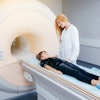
.fFmgij6Hin.png?auto=compress%2Cformat&fit=crop&h=100&q=70&w=100)

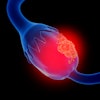


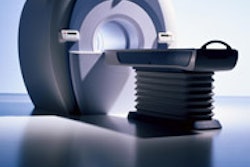
.fFmgij6Hin.png?auto=compress%2Cformat&fit=crop&h=167&q=70&w=250)




